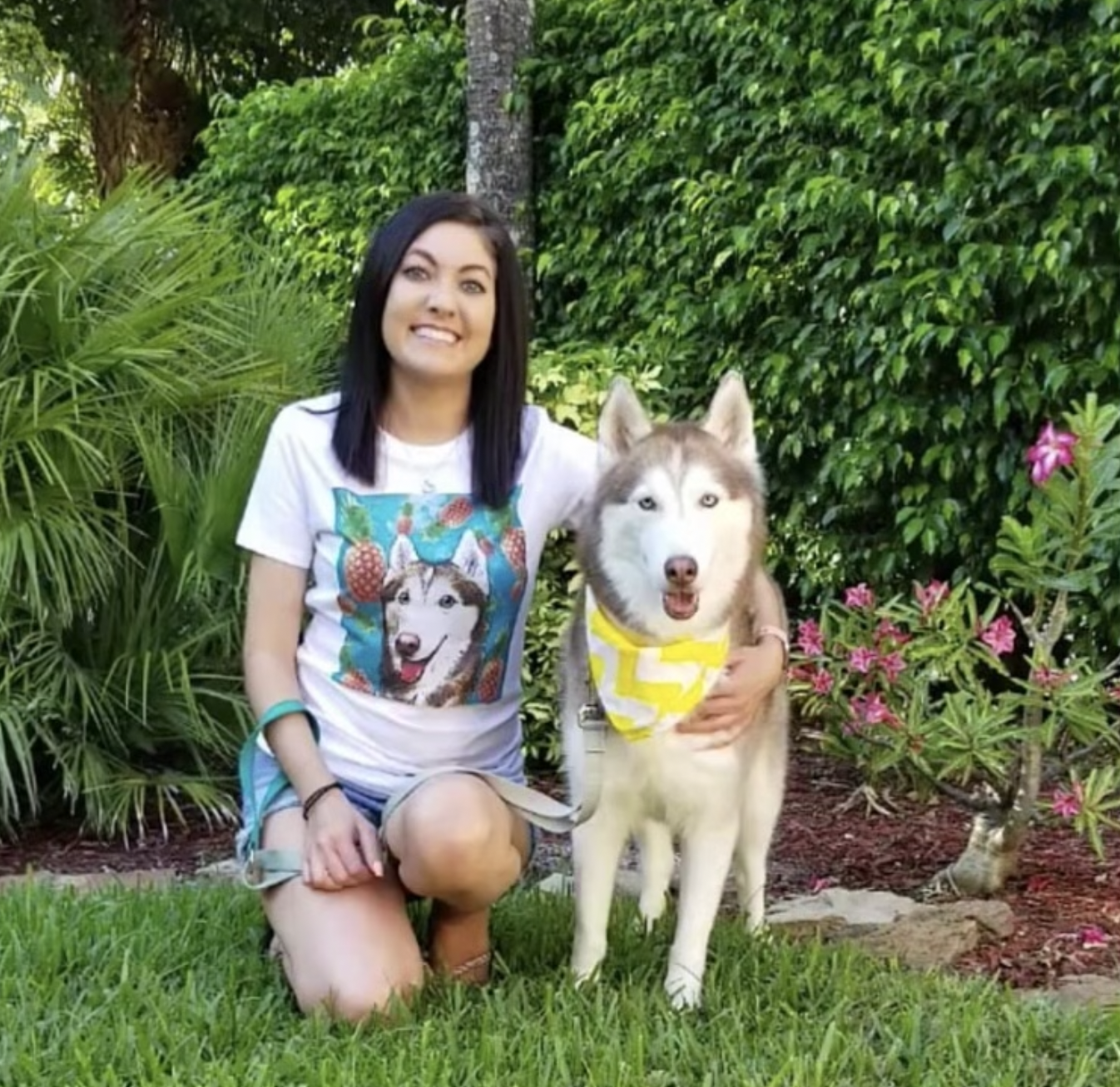For Pups With Short Attention Spans…
Dogs typically lie at their owner’s feet to feel close to you, who they often regard as their “pack leader.” However, if the foot-cuddling is paired with other signs of anxiety, fear, defensiveness, territorial behavior, or separation anxiety, it might be a good idea to work on setting happy boundaries with your pup.
Oh, those are such cute slippers! Where did you get them? Oh… wait… that’s just your dog taking a nap on your feet like a little weirdo. Still super heckin’ cute—and warmer than slippers, but if you’re like us, you’re still wondering, why does my dog lay on my feet?
Reasons Why Dogs Cuddle With Our Feet
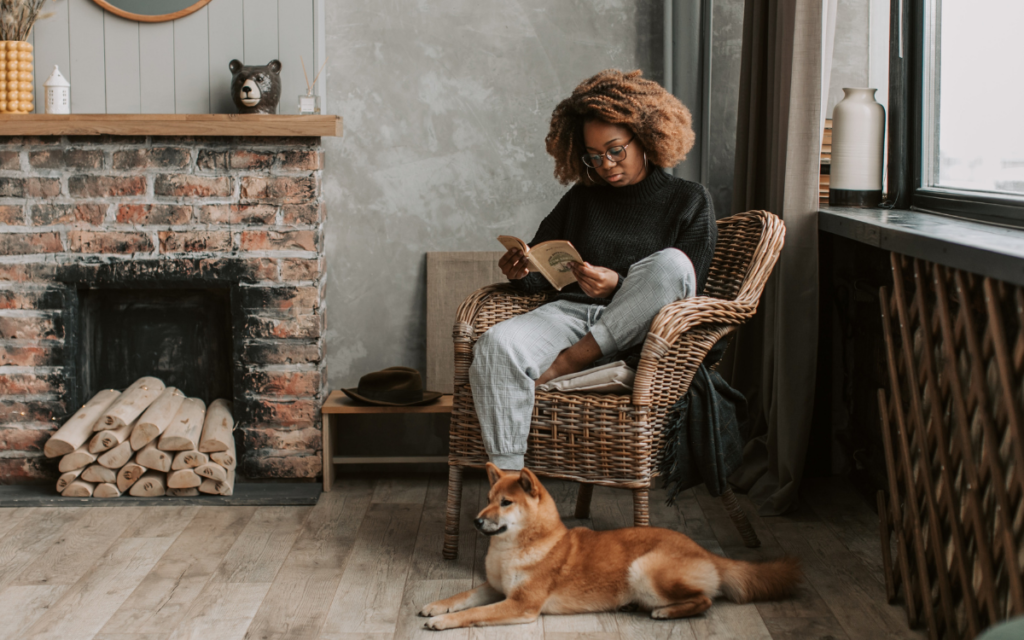

Snoozing off on a foot may not seem like a comfortable sleeping position to a human, but to a dog, it’s second nature. Like so many of our dogs’ seemingly odd behaviors, lying on our feet is a behavioral instinct that comes from the social aspect of pack animal mentality.
Dogs are born into and raised in groups, or “packs,” needing little to no space from one another. Pack animals thrive by cooperating, communicating, working together to survive, and, yes, cuddling together! It just so happens that their pack is now made up of furless-two-leggers (a.k.a us human dog owners). Many dogs give their pet parents the preferential spot on the bed or couch, as they view us as their pack leader. This respectful deference of hierarchy is often the reason why dogs may choose to sleep at the foot of the bed.
Furthermore, from the time they begin walking, puppies follow their mothers closely, often directly underfoot. The desire to lie on your feet stems from an instinct to not only be close with loved ones, but also to seek protection from pack leaders. If your dog continually places themself at your feet, it’s possible that they feel safest there. It doesn’t matter how expensive that dog bed was, your foot is more comfy to them! The fact that they also make a wonderful foot warmer is just another bonus! And hey, in the winter, you’re sharing your warmth too!
So, to recap, reasons your pup may be closely attached to your (possibly stinky) feet are:
- You’re their pack.
- They give you, their pack leader, the best seat in the house, your feet are just fine, thanks.
- They feel safe being close to you (maybe just not safe from your stink-foot).
- Cuddles and affection are just nice—and warm!
Possible Issues To Watch For If Your Dog Is Cuddling Up To Your Feet
Don’t worry, your dog doesn’t have a foot fetish, but there are some other behavioral concerns to watch for regarding their love of your stinky feet.
Stress/Anxiety
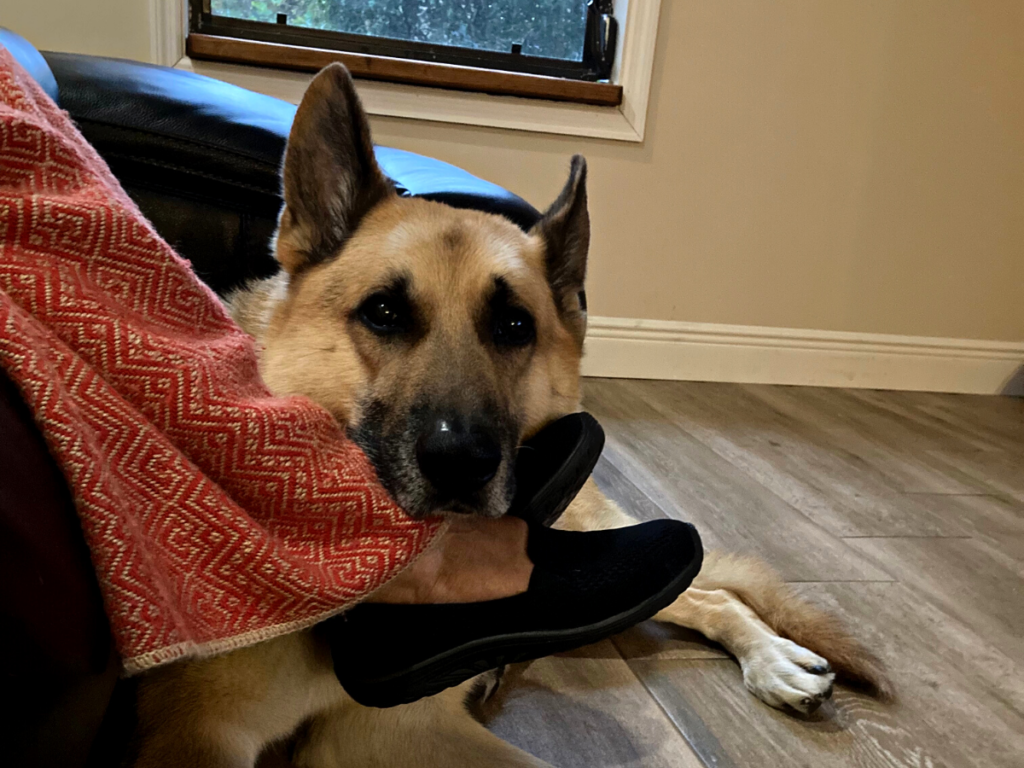

Some dogs who are usually confident and independent may huddle near your feet during times of stress. For the most part, this occasional clinginess is pretty normal during stressful situations such as vet visits, thunderstorms, fireworks, or when a bunch of young children are running around being a little too grabby with your pup. Your dog is just coming to you for comfort and security when they’re feeling unsure about a situation (you are their best friend, after all!). If the behavior is infrequent and only during times of high stress, it’s important to reassure them and comfort them. Never yell at them for being clingy in theses situations, as it will only make their fear worse.
However, this behavior can become pretty extreme in some dogs, which is something to keep an eye on. If, say, during a thunderstorm, your dog appears to be shaking, whining, crying, or even peeing themselves out of fear, while smooshing themselves up against you for protection, it may be time to look into solutions to help them. This could look like:
- Trying a Thunder Shirt for your dog, which is meant to comfort them
- Creating a den space for them during storms/fireworks. This could be something like a cozy crate with a blanket over it
- Playing music to drown out the sound of storms/fireworks
- Talking to your vet about anti-anxiety medications like Xanax for stressful vet appointments/storms/fireworks
Insecurity/Trauma
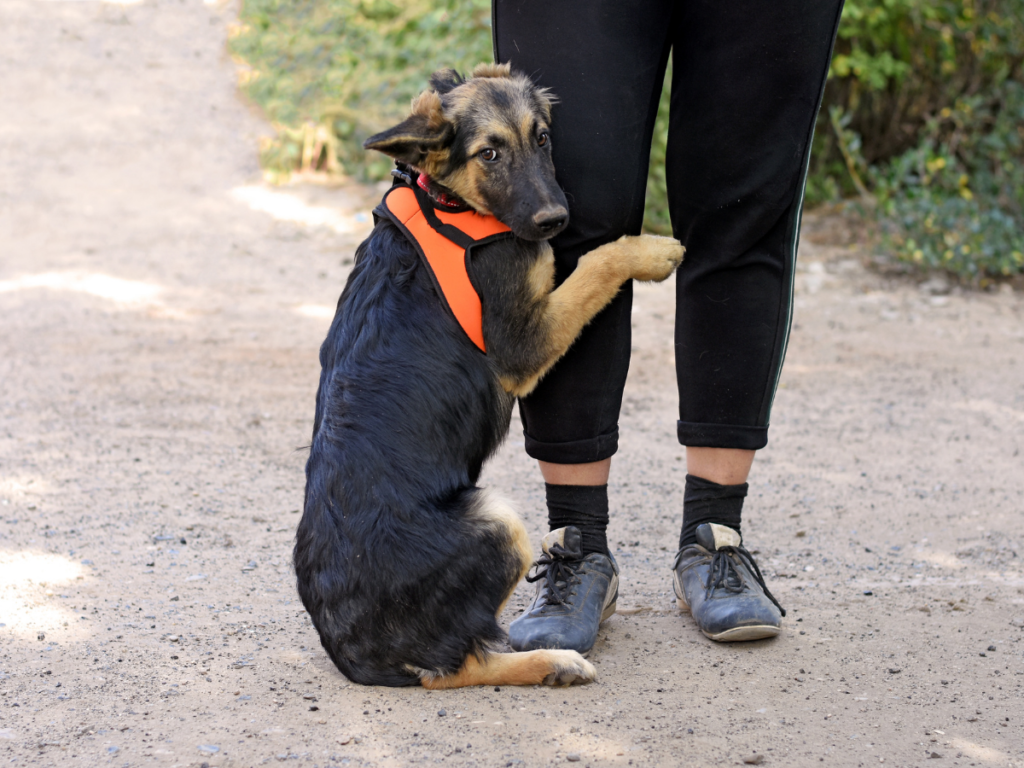

A dog who cowers or huddles at your feet may be expressing feelings of insecurity—often from past trauma—and in need of some help and reassurance. Body language that indicated your dog may be traumatized or feeling insecure include:
- holding their body low to the ground
- clinging to your body
- ears sideways or back
- tail low or between legs and tight against their body (it may rapidly wag out of fear)
- shaking
- panting
- yawning (out of stress)
- peeing themselves
Exhibiting some or all of these behaviors in conjunction with huddling up against your feet/legs is common in dogs who have been adopted from shelters or rescued from stressful situations. We often don’t know their full backgrounds and the horrors of their past experiences that have left them feeling so scared, but it’s now our job to help them rebuild that confidence.
While it’s important that you are, first and foremost, your dog’s beacon of protection, it might not be healthy for your pup to constantly use you as a safety blanket. Take these moments to work on positive training and seek the guidance of a trusted dog trainer with experience in behavioral issues. It can help build your pup’s self-confidence and ease the anxious mindset they’re stuck in. By taking positive steps towards having your dog lessen their fears or insecurities, you’ll be doing your furry friend (and their self-esteem) a long-term favor.
Being Territorial
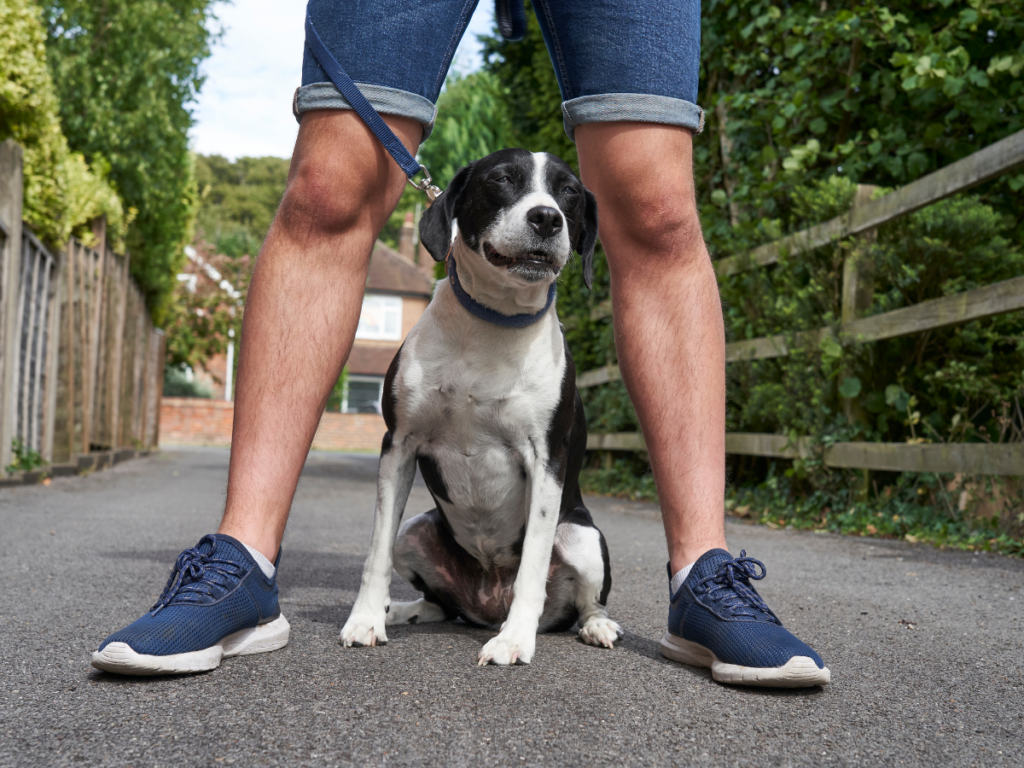

Similarly, if your dog is tense as they lie or sit at your feet—in a hostile or aggressive way towards others—this could be a sign of a behavioral issue. Some dogs will sit or lie on or near their human’s feet in order to express dominance or claim territory, while barking, growling or biting anyone who tries to come near you. Signs to watch for including:
- barking or growling at people/animals who approach you
- biting/snapping at those who come near
- lunging
Dogs who are rewarded by cuddles and pats for protecting you when you’re not in need of protection may continue this behavior to the point that it becomes problematic and even dangerous. It’s always a good idea to seek help from a knowledgeable dog behavior specialist when it comes to cases of aggression, because you may actually make the problem worse if you don’t know how to properly address the underlying issue.
Separation Anxiety
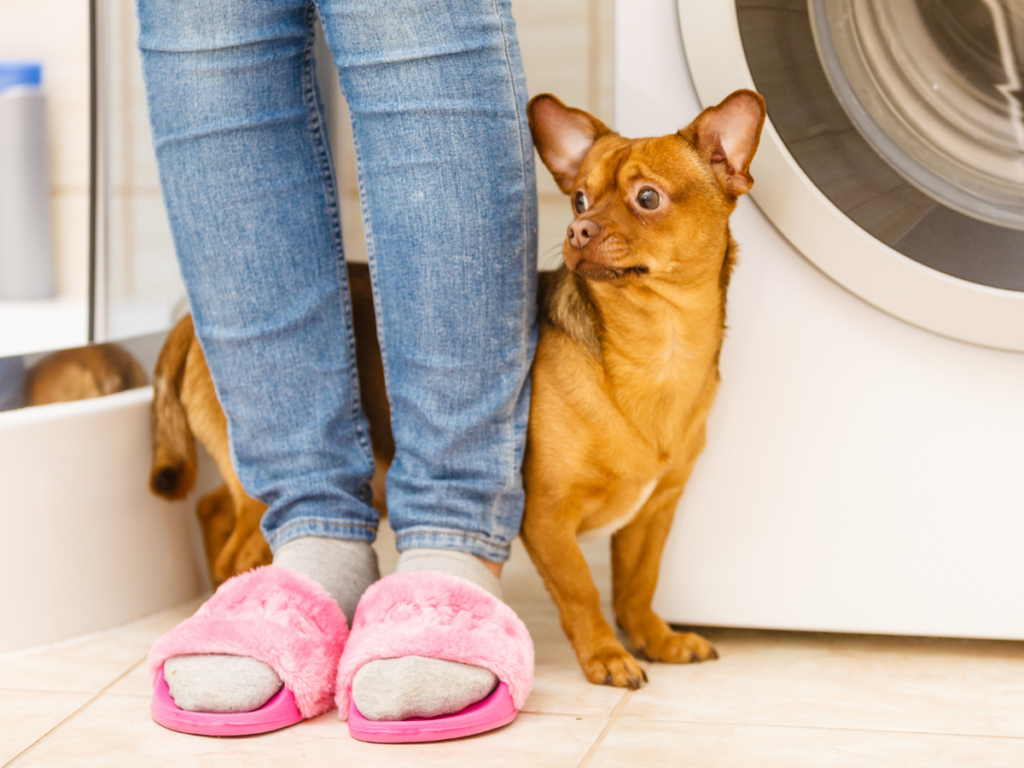

Dogs with separation anxiety can often turn into “velcro” dogs who don’t feel safe when they’re away from you (or, in this case, away from your feet). While it’s natural for your dog to want to spend the maximum amount of time with you, if your dog appears anxious when they’re not touching you, then the behavior may not be healthy. Think of ways in which you can help your pup grow their self-confidence. Taking long walks, going running or hiking, exploring new places, hitting the agility course, trying new exercises or tricks, and meeting other people or dogs might allow them to develop a stronger sense of self, as well as feel more relaxed in the world.
Final Thoughts
If lying at your feet is an enjoyable and natural state of being for both you and your dog, keep the cuddles coming! For dogs that may be exhibiting signs of insecurity, separation anxiety, fear, or dominance, consider working on establishing healthy and happy boundaries. That way, physical closeness with your dog remains a loving, comforting, and even joyful experience for everyone. And as always, when in doubt about a behavior that seems troubling, consult a professional to consider dog training! Happy cuddling!

